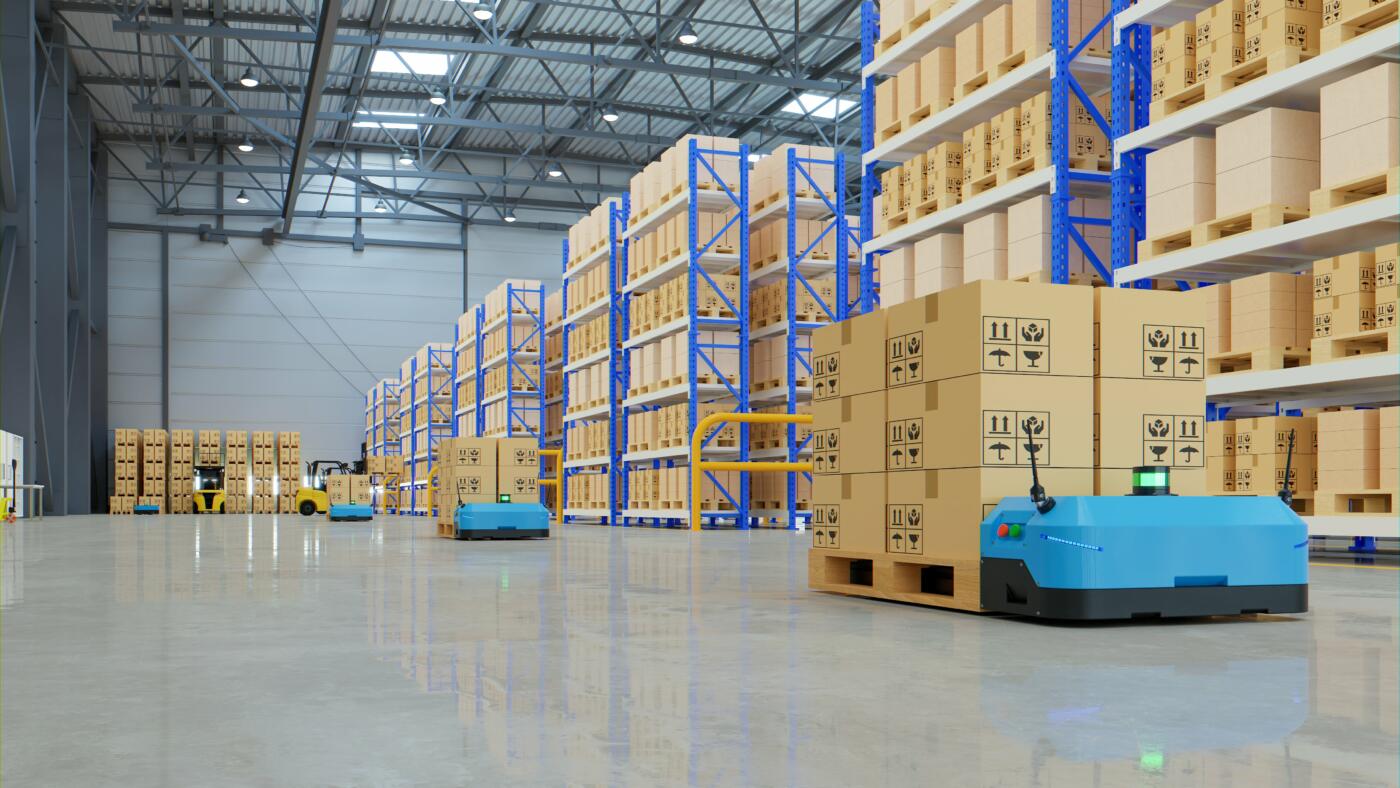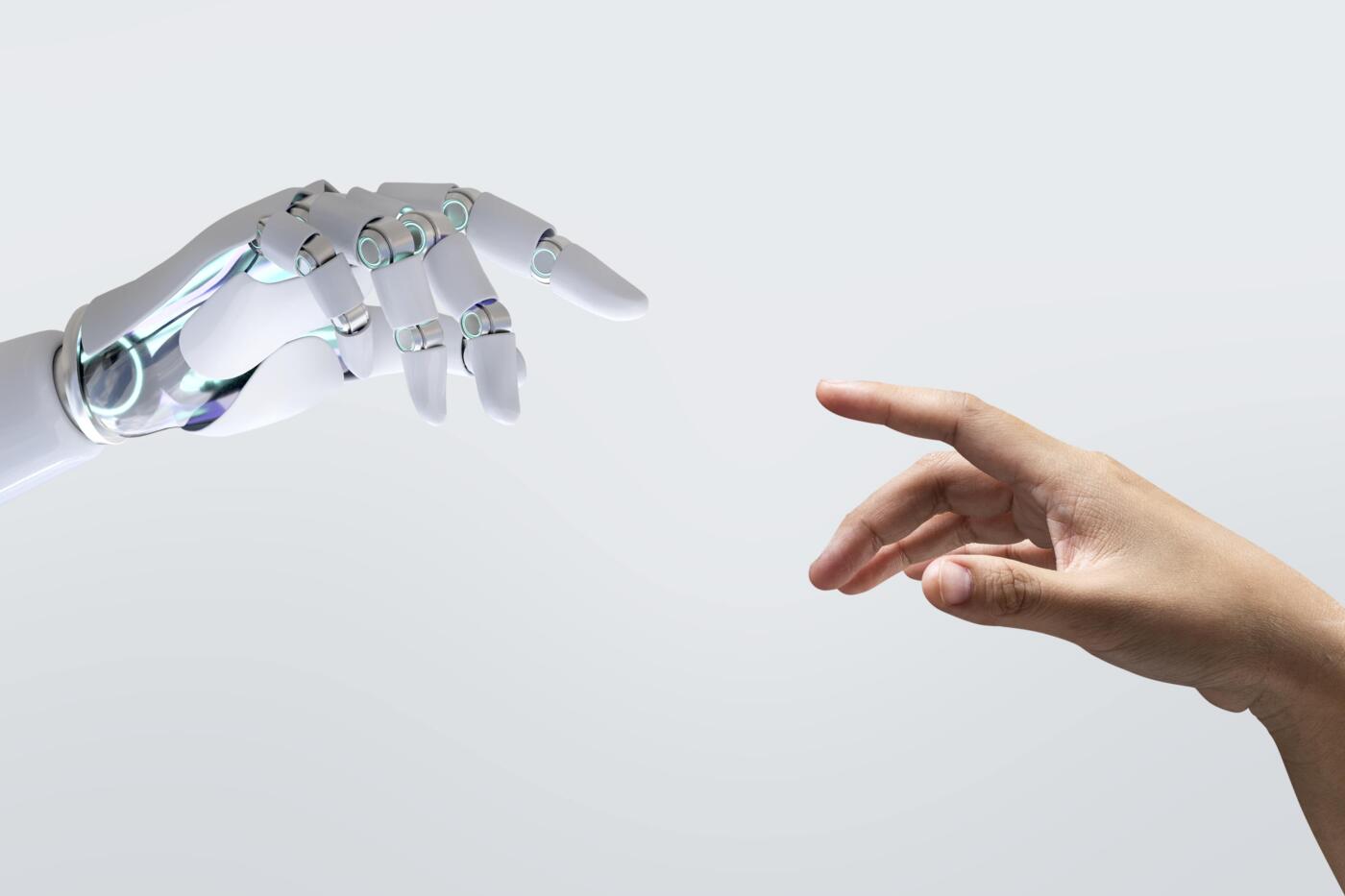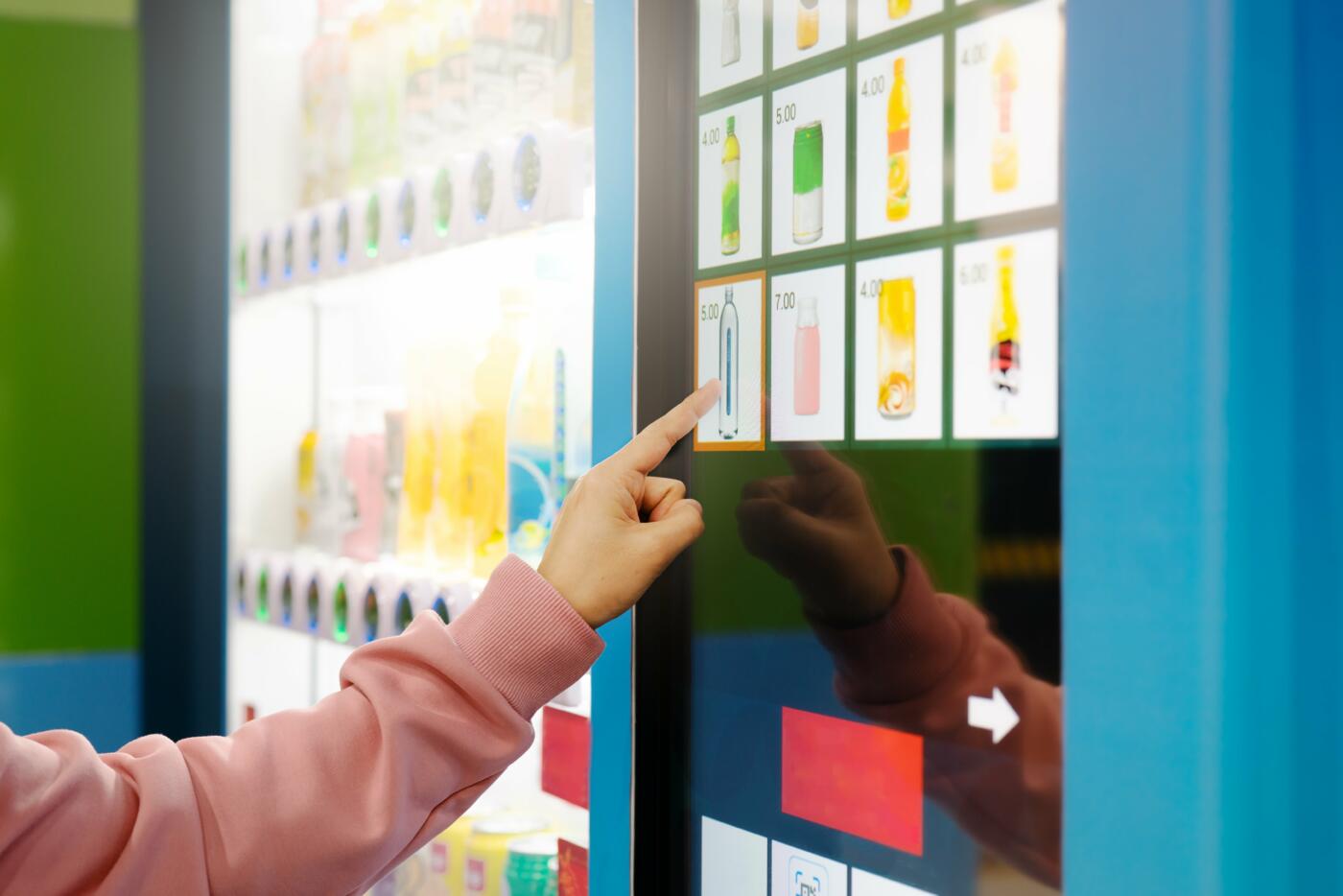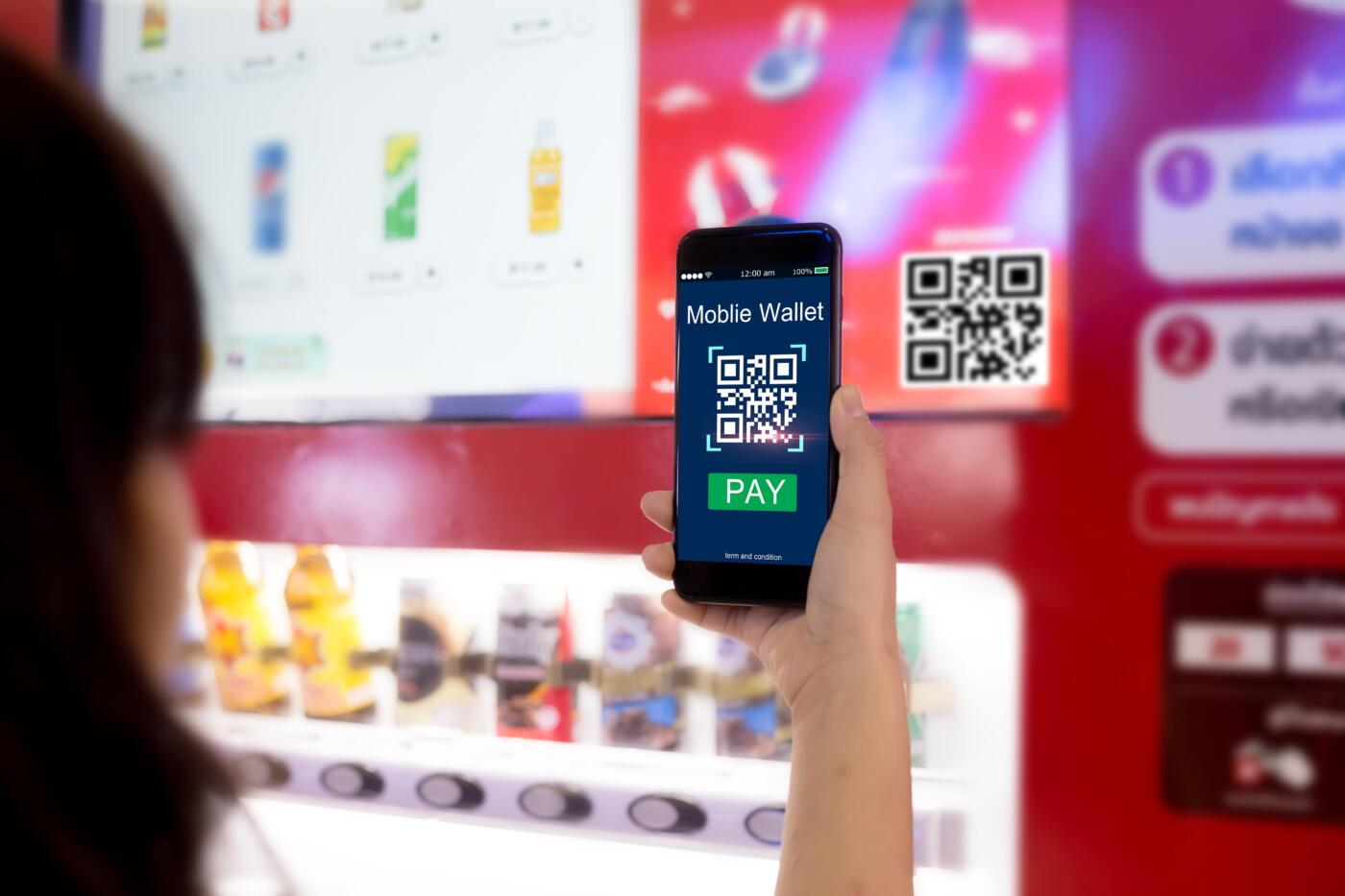The new era of unattended retail is here. Digital payments, automated processes, AI-powered sales predictions, and augmented reality are all part of this digital transformation. Read how retailers can use these powerful tools to grow their business while consumers can meet their needs more conveniently.
Digitalization of vending and unattended retail
We all know what vending is, but what is unattended retail? In a general sense, unattended retail can be described as any point of sale that doesn’t require human interaction to provide a product or service. In other words, it is any type of retail where the sale is executed automatically with the use of machines. It is also known as unmanned retail.
Historically, unattended retail began long ago with the first snack and coffee vending machines, ATMs, and parking meters. Even a newsrack, a street dispenser where you throw in a coin and get a newspaper is a rudimental form of unattended retail.
With the rise of digital technology, AI, IoT, and mobile applications, and the pandemic that acted as a catalyst for growing consumer needs, unattended retail flourished into a digitally transformed industry. The key postulate of this new, digital way of doing retail is real-time data, automation, anticipating future demand, and consumer excellence.

Key principles of digitalization in unattended retail
Real-time data is the key to digitalization. Every digitally transformed vendor needs to know in real time what, where, and how is happening and streamline all this information in the cloud for further analysis. Having all this data allows retailers to predict future trends of stock and sales movements, so they can anticipate changes and make proactive business decisions.
Furthermore, retail automation provides businesses with a technology that enables them to streamline manual, repetitive processes that are otherwise too time-consuming. It refers to automating, simplifying, and removing as many low-value manual processes as possible to lower the workload of employees and free up time for more valuable tasks. It can entail warehouse management, inventory management, order fulfillment, and so forth.
Looking from the consumer’s side, digital transformation puts consumers first and helps them shop faster and easier. It provides them with more convenient vending payments, personalized offerings, loyalty schemes, and an extended range of products that can be offered through unattended outlets such as vending machines, micro-markets, and self-service kiosks.
Benefits of digitalization for retailers
Optimizing workforce
One of the main ways in which retailers can embrace digitalization is through the automation of iterative tasks to optimize the efficiency of processes and employees. One of the key areas of automation is workhouse management. In fact, it is expected that the warehouse automation market will see tremendous growth in the upcoming years — it is expected that 61% of warehouses will combine manual labor with automation solutions by 2024.
Warehouse automation can take place in many ways, from picking and packing robots that can help with order fulfillment to robots that optimize your warehouse’s layout to free up space for more inventory. Other common use cases of warehouse automation include barcode scanning, data collection, employee management, pick-to-light, and prekitting, to name a few. Prekitting is a warehouse management system that allows merchandiser staff to save time on the field by optimizing their packing processes. They can pre-pack the exact amounts of goods on pallets or boxes per machine, so they don’t need to overfill the van and use it as a mobile warehouse.
Predicting future demand
One of the key principles of digitalization is collecting real-time data about stock levels from your unattended outlets, which is done through some type of inventory management system. It is a powerful weapon because it enables retailers to track their stock and predict future demands accurately. By automating stock counts, the system will automatically be able to alert you when stock is low while also allowing you to automate purchasing processes for your customers.
Inventory management automation can also be beneficial for multi-channel management. The latter is of great importance these days as more retailers combine different channels — such as brick-and-mortar stores, online stores, pop-up shops, or unattended retail marketplaces. It is, therefore, more important than ever that inventory levels are automatically updated across all channels.
Minimizing human error
To err is human. But, when retailers utilize real-time data and AI technology that makes accurate predictions based on the collected data, there are fewer chances of errors. AI is also faster than humans and can process more data in the same amount of time. For instance, a merchandising planner needs 2 hours to plan routes for 10 fillers, while the system with enough data and unchanged conditions can do it in approximately 5 minutes.
There are also fewer chances for employees to get hurt if riskier tasks can be allocated to robots. For example, robots can supplement warehouse workers who are prone to accidents caused by a lack of focus or distraction.



Improving business efficiency
AI technology is suitable for executing repetitive tasks at a faster rate than humans. Still, humans are better decision-makers when it comes to adapting and taking into consideration unexpected situations (like the covid pandemic).
Retailers can use that fact to their advantage. By utilizing automation software and AI technologies to do iterative tasks, humans have enough time to perform higher-value activities such as sales optimization, improving user experience, technical innovations, etc.



Attracting more consumers
By utilizing new unattended technology, businesses can create specific niches to attract customers looking for high-quality, specialty products. For example, many small business owners, such as local farmers, bakers, and butchers, started offering their fresh produce in self-service stores and vending machines. Thanks to real-time product monitoring and proper warehouse management, they can guarantee the freshness of the goods in the machine and no spoilage in the transport.
Younger generations, like millennials and Gen Z, always look for faster, easier, and more personalized shopping experiences. You can provide that by offering cashless payment options, additional product information, or anticipating their needs through customized offers.
On the other hand, older shoppers might appreciate it if you go the extra mile by giving them the possibility to buy products while minimizing the risks to their health. They were surely one of the market segments highly influenced by the pandemic, so innovative businesses could take that as an opportunity to stand out by offering touchless payments and expanding their product distribution to vending machines.
Benefits of digitalization for consumers
More convenience with an extended offering
Studies have shown that newer generations of consumers, such as Gen Z, don’t like to interact with other people when they’re shopping. They want an individualistic, more personal approach. Moreover, during the COVID pandemic, people of all generations were avoiding crowdy shopping centers whenever they could.
Luckily, with innovations in technology, unattended vending machines became so versatile in their offerings that they could literally replace traditional stores. Smart machines with scanners, voice commands, and age verification enable consumers to buy everything from prescribed pharma and medical products to alcohol and cigarettes.
A big trend in unattended retail is micro-markets – self-service stores offering a larger selection of goods, usually focusing on healthy meal options. A typical scenario for a micro-market is a staff-only store inside an office breakroom, where an employee can eat a snack or a fresh meal without leaving the premises or eating junk food from delivery.
Improved shopping experience
From augmented reality to real-time monitoring and GPS, digitally enhanced machines can offer more than a product – they can give consumers a wholesome experience.
Some brands push notifications on their consumers’ phones when they are near the machine. For instance, a businesswoman craving coffee while in a hurry can get the notification on her phone, pointing to the nearest coffee machine. It is a good nudge in the right direction for those unsure of their options.
Gen Z is definitely a trendsetting generation. Shopping for clothes, makeup, and exclusive products at vending machines and self-service kiosks is not an unfamiliar behavior for them. Digitally forward retailers had made that more accessible by giving them a chance to virtually try out the goods before buying them. Some beauty brands’ vending machines use augmented reality to show consumers how the makeup will look on them.
Moreover, some machines offering meals have displays that can provide consumers with additional product information. A consumer can check the number of calories and the ingredient list for each meal and even get meal suggestions. With the growing number of people with food allergies, special meal plans, and diets, this can be an excellent opportunity to set yourself apart from the competition.



Cashless and Touchless Payment
One of the major trends within the unattended retail industry is the demand for contactless payments. Different mobile apps, digital wallets, credit cards, and wearables are a quicker and easier way of paying – no need to carry or count cash. On the other hand, prepaid cards are usually a part of an employee benefits package, which employers use to offer free or subsidized coffees, lunches, and so on.
Touchless machines further protect consumer health by allowing users to select and pay for the product using only their phones. These technologies flourished during the pandemic, but it’s safe to say people will continue using them long after its end.
Personalized offers
The technology behind unattended retail, such as mobile applications, digital payment, and QR codes, allows companies to interact with consumers on a more personal level and acquire data about their preferences and purchases. On top of it, digital wallets often have integrated loyalty schemes – the more you use it, the more it pays off.



In return, consumers can get a personalized shopping experience with dynamic, specific offers making them come back for more. This can include loyalty programs with special benefits and discounts, promotional prices, one-time offers, and user polls.
Televend – your unattended retail digitalization ally
Televend is Europe’s largest and most advanced digital platform that automates and optimizes all daily operations for unattended retailers.
Warehouse automation
Televend helps operators streamline warehouse management with the app called Pick and Pack. It lists all the machines they need to visit that day and the products they need to fill per machine, so they can pre-pack them in the boxes before starting a route. It saves time for fillers at the location and ensures that the right products are filled in the right machines. The same number of fillers can service up to 50% more machines, which is really incredible considering the lack of workforce in some markets, like the UK.
Inventory management and route planning
Televend monitors machine stock in real time and alerts you whenever the stock is low. With its AI ability, Televend can predict when you’ll entirely run out of some products and start losing sales opportunities. Using these insights, it plans the routes by suggesting the locations you need to visit for the next seven days, taking into account the priority and distance of each site. Merchandisers can easily track the status of their routes and daily tasks on a dedicated mobile app.



Remote management
Televend’s remote stock reporting alongside real-time error tracking allow remote management. Whether you need to change prices, product layout, or other settings on your machines – you can do it from the comfort of your office.
AI Predictions and Analytics
On top of daily operations, retailers can use Televend’s AI technology and historical machine data to make sales predictions. Based on them, operators can plan their operations weeks in advance and even make business decisions like optimizing planograms to drive more sales. Televend’s BI reports can even further analyze your operations to detect top-selling products and gaps in your route planning.
Digital payments and loyalty
Televend also offers a set of digital payment options – from classic bank cards like Visa and Maestro, to RFID-enabled cards and keys, to QR codes and our own digital wallet. It supports open and closed-loop payments, meaning you can serve both private and public sets of consumers. Providing consumers with cashless payment options boosts convenience, makes payments quicker and protects their health. Moreover, by rewarding their consumption with different loyalty programs, you can stand out from other competitors and make them come back for more.



If you’re thinking about digitizing your unattended retail business, feel free to contact our team and get the best advice on how to optimize your operations with Televend solutions. We’ll help you save money on operational costs, boost business efficiency, and delight your customers.
The new era of unattended retail is here. Digital payments, automated processes, AI-powered sales predictions, and augmented reality are all part of this digital transformation. Read how retailers can use these powerful tools to grow their business while consumers can meet their needs more conveniently.
Digitalization of vending and unattended retail
We all know what vending is, but what is unattended retail? In a general sense, unattended retail can be described as any point of sale that doesn’t require human interaction to provide a product or service. In other words, it is any type of retail where the sale is executed automatically with the use of machines. It is also known as unmanned retail.
Historically, unattended retail began long ago with the first snack and coffee vending machines, ATMs, and parking meters. Even a newsrack, a street dispenser where you throw in a coin and get a newspaper is a rudimental form of unattended retail.
With the rise of digital technology, AI, IoT, and mobile applications, and the pandemic that acted as a catalyst for growing consumer needs, unattended retail flourished into a digitally transformed industry. The key postulate of this new, digital way of doing retail is real-time data, automation, anticipating future demand, and consumer excellence.



Key principles of digitalization in unattended retail
Real-time data is the key to digitalization. Every digitally transformed vendor needs to know in real time what, where, and how is happening and streamline all this information in the cloud for further analysis. Having all this data allows retailers to predict future trends of stock and sales movements, so they can anticipate changes and make proactive business decisions.
Furthermore, retail automation provides businesses with a technology that enables them to streamline manual, repetitive processes that are otherwise too time-consuming. It refers to automating, simplifying, and removing as many low-value manual processes as possible to lower the workload of employees and free up time for more valuable tasks. It can entail warehouse management, inventory management, order fulfillment, and so forth.
Looking from the consumer’s side, digital transformation puts consumers first and helps them shop faster and easier. It provides them with more convenient vending payments, personalized offerings, loyalty schemes, and an extended range of products that can be offered through unattended outlets such as vending machines, micro-markets, and self-service kiosks.
Benefits of digitalization for retailers
Optimizing workforce
One of the main ways in which retailers can embrace digitalization is through the automation of iterative tasks to optimize the efficiency of processes and employees. One of the key areas of automation is workhouse management. In fact, it is expected that the warehouse automation market will see tremendous growth in the upcoming years — it is expected that 61% of warehouses will combine manual labor with automation solutions by 2024.
Warehouse automation can take place in many ways, from picking and packing robots that can help with order fulfillment to robots that optimize your warehouse’s layout to free up space for more inventory. Other common use cases of warehouse automation include barcode scanning, data collection, employee management, pick-to-light, and prekitting, to name a few. Prekitting is a warehouse management system that allows merchandiser staff to save time on the field by optimizing their packing processes. They can pre-pack the exact amounts of goods on pallets or boxes per machine, so they don’t need to overfill the van and use it as a mobile warehouse.
Predicting future demand
One of the key principles of digitalization is collecting real-time data about stock levels from your unattended outlets, which is done through some type of inventory management system. It is a powerful weapon because it enables retailers to track their stock and predict future demands accurately. By automating stock counts, the system will automatically be able to alert you when stock is low while also allowing you to automate purchasing processes for your customers.
Inventory management automation can also be beneficial for multi-channel management. The latter is of great importance these days as more retailers combine different channels — such as brick-and-mortar stores, online stores, pop-up shops, or unattended retail marketplaces. It is, therefore, more important than ever that inventory levels are automatically updated across all channels.
Minimizing human error
To err is human. But, when retailers utilize real-time data and AI technology that makes accurate predictions based on the collected data, there are fewer chances of errors. AI is also faster than humans and can process more data in the same amount of time. For instance, a merchandising planner needs 2 hours to plan routes for 10 fillers, while the system with enough data and unchanged conditions can do it in approximately 5 minutes.
There are also fewer chances for employees to get hurt if riskier tasks can be allocated to robots. For example, robots can supplement warehouse workers who are prone to accidents caused by a lack of focus or distraction.



Improving business efficiency
AI technology is suitable for executing repetitive tasks at a faster rate than humans. Still, humans are better decision-makers when it comes to adapting and taking into consideration unexpected situations (like the covid pandemic).
Retailers can use that fact to their advantage. By utilizing automation software and AI technologies to do iterative tasks, humans have enough time to perform higher-value activities such as sales optimization, improving user experience, technical innovations, etc.



Attracting more consumers
By utilizing new unattended technology, businesses can create specific niches to attract customers looking for high-quality, specialty products. For example, many small business owners, such as local farmers, bakers, and butchers, started offering their fresh produce in self-service stores and vending machines. Thanks to real-time product monitoring and proper warehouse management, they can guarantee the freshness of the goods in the machine and no spoilage in the transport.
Younger generations, like millennials and Gen Z, always look for faster, easier, and more personalized shopping experiences. You can provide that by offering cashless payment options, additional product information, or anticipating their needs through customized offers.
On the other hand, older shoppers might appreciate it if you go the extra mile by giving them the possibility to buy products while minimizing the risks to their health. They were surely one of the market segments highly influenced by the pandemic, so innovative businesses could take that as an opportunity to stand out by offering touchless payments and expanding their product distribution to vending machines.
Benefits of digitalization for consumers
More convenience with an extended offering
Studies have shown that newer generations of consumers, such as Gen Z, don’t like to interact with other people when they’re shopping. They want an individualistic, more personal approach. Moreover, during the COVID pandemic, people of all generations were avoiding crowdy shopping centers whenever they could.
Luckily, with innovations in technology, unattended vending machines became so versatile in their offerings that they could literally replace traditional stores. Smart machines with scanners, voice commands, and age verification enable consumers to buy everything from prescribed pharma and medical products to alcohol and cigarettes.
A big trend in unattended retail is micro-markets – self-service stores offering a larger selection of goods, usually focusing on healthy meal options. A typical scenario for a micro-market is a staff-only store inside an office breakroom, where an employee can eat a snack or a fresh meal without leaving the premises or eating junk food from delivery.
Improved shopping experience
From augmented reality to real-time monitoring and GPS, digitally enhanced machines can offer more than a product – they can give consumers a wholesome experience.
Some brands push notifications on their consumers’ phones when they are near the machine. For instance, a businesswoman craving coffee while in a hurry can get the notification on her phone, pointing to the nearest coffee machine. It is a good nudge in the right direction for those unsure of their options.
Gen Z is definitely a trendsetting generation. Shopping for clothes, makeup, and exclusive products at vending machines and self-service kiosks is not an unfamiliar behavior for them. Digitally forward retailers had made that more accessible by giving them a chance to virtually try out the goods before buying them. Some beauty brands’ vending machines use augmented reality to show consumers how the makeup will look on them.
Moreover, some machines offering meals have displays that can provide consumers with additional product information. A consumer can check the number of calories and the ingredient list for each meal and even get meal suggestions. With the growing number of people with food allergies, special meal plans, and diets, this can be an excellent opportunity to set yourself apart from the competition.



Cashless and Touchless Payment
One of the major trends within the unattended retail industry is the demand for contactless payments. Different mobile apps, digital wallets, credit cards, and wearables are a quicker and easier way of paying – no need to carry or count cash. On the other hand, prepaid cards are usually a part of an employee benefits package, which employers use to offer free or subsidized coffees, lunches, and so on.
Touchless machines further protect consumer health by allowing users to select and pay for the product using only their phones. These technologies flourished during the pandemic, but it’s safe to say people will continue using them long after its end.
Personalized offers
The technology behind unattended retail, such as mobile applications, digital payment, and QR codes, allows companies to interact with consumers on a more personal level and acquire data about their preferences and purchases. On top of it, digital wallets often have integrated loyalty schemes – the more you use it, the more it pays off.



In return, consumers can get a personalized shopping experience with dynamic, specific offers making them come back for more. This can include loyalty programs with special benefits and discounts, promotional prices, one-time offers, and user polls.
Televend – your unattended retail digitalization ally
Televend is Europe’s largest and most advanced digital platform that automates and optimizes all daily operations for unattended retailers.
Warehouse automation
Televend helps operators streamline warehouse management with the app called Pick and Pack. It lists all the machines they need to visit that day and the products they need to fill per machine, so they can pre-pack them in the boxes before starting a route. It saves time for fillers at the location and ensures that the right products are filled in the right machines. The same number of fillers can service up to 50% more machines, which is really incredible considering the lack of workforce in some markets, like the UK.
Inventory management and route planning
Televend monitors machine stock in real time and alerts you whenever the stock is low. With its AI ability, Televend can predict when you’ll entirely run out of some products and start losing sales opportunities. Using these insights, it plans the routes by suggesting the locations you need to visit for the next seven days, taking into account the priority and distance of each site. Merchandisers can easily track the status of their routes and daily tasks on a dedicated mobile app.



Remote management
Televend’s remote stock reporting alongside real-time error tracking allow remote management. Whether you need to change prices, product layout, or other settings on your machines – you can do it from the comfort of your office.
AI Predictions and Analytics
On top of daily operations, retailers can use Televend’s AI technology and historical machine data to make sales predictions. Based on them, operators can plan their operations weeks in advance and even make business decisions like optimizing planograms to drive more sales. Televend’s BI reports can even further analyze your operations to detect top-selling products and gaps in your route planning.
Digital payments and loyalty
Televend also offers a set of digital payment options – from classic bank cards like Visa and Maestro, to RFID-enabled cards and keys, to QR codes and our own digital wallet. It supports open and closed-loop payments, meaning you can serve both private and public sets of consumers. Providing consumers with cashless payment options boosts convenience, makes payments quicker and protects their health. Moreover, by rewarding their consumption with different loyalty programs, you can stand out from other competitors and make them come back for more.



If you’re thinking about digitizing your unattended retail business, feel free to contact our team and get the best advice on how to optimize your operations with Televend solutions. We’ll help you save money on operational costs, boost business efficiency, and delight your customers.
Table of Contents


Subscribe To Our Newsletter
Sign up to our monthly business newsletter for useful articles, tips, and tricks for boosting your business success.
By subscribing, you consent to receive email marketing communications from Televend. For more
information please read our Privacy Policy.


